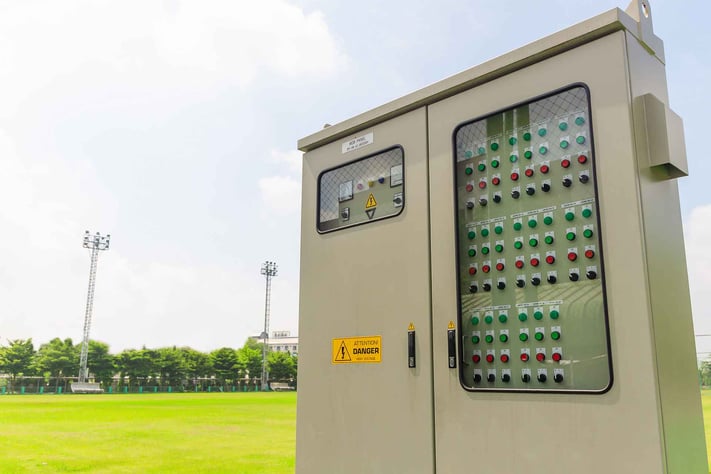
Weatherproof, Waterproof, and What Else?
There are a number of factors you should consider to ensure that your outdoor electrical enclosures offer reliable long-term performance.
First and foremost, you should carefully consider the operational environment of each enclosure. Note any potential hazards or harsh conditions – no matter how small the threat may seem. Keep in mind that any issues will tend to accumulate over time, whether it’s water ingress or salt corrosion, ultimately causing reliability issues within your electrical equipment.
Once you have determined the needs of your equipment and have identified all potential operational hazards, an experienced manufacturer can then design a custom outdoor enclosure around your unique requirements and specifications.
Carefully Consider the Operational Conditions for Your Outdoor Electrical Enclosure
Before building a custom outdoor electrical enclosure, consider these common environmental hazards that can wreak havoc on any electrical components:
- Water ingress such as from rain, steam, or ambient moisture.
- Special consideration should be given to high-pressure water ingress, such as from pressure washing or equipment hose downs.
- Ingress of dust, dirt, debris, and other airborne contaminants which can potentially cause electrical shorts.
- Extreme temperatures, whether high or low, which can affect the performance of some electronics as well as the material properties of the enclosure.
- Freeze and thaw cycles which can cause ice to form on the enclosure surface or within tight spaces.
- Exposure to corrosive chemicals such as industrial cleaners and solvents.
- Unauthorized access by people (i.e. tampering) or damage from animals and insects.
The Four Most Important Considerations for Outdoor Electrical Enclosures
Waterproof Rating
Waterproof ratings come in many forms. An enclosure can be completely watertight, it can be waterproof, it can be splash-proof, or it can simply be water-resistant. Whatever your application may be, it’s imperative to use an enclosure that exceeds your waterproofing requirements and keeps all electrical components safe. You can learn more about tips for waterproofing outdoor electrical enclosures in AIM’s previous blog.
Other Weatherproofing Features
Obviously, water isn’t the only environmental hazard you have to worry about. Extreme temperatures, UV rays from the sun, salt and other corrosive elements, as well as dust and debris can all add up over time and lead to a breakdown in your electrical equipment. The material experts at AIM Processing can help develop your outdoor enclosure with reliable weatherproofing features – we can also choose the most durable and reliable injection molded plastics for your unique applications.
Signal Interference for Remote Monitoring and Smart Features
Many of today’s electrical devices require digital connectivity – whether Wi-Fi, Bluetooth, or various other wireless RF signals. In these cases, it’s important to design an outdoor electrical enclosure that allows for clean signal transmission with as little interference as possible. Often, this requires the clever utilization of metal replacement solutions using quality plastics that do not cause interference.
The Outdoor Electrical Enclosure Specialists
AIM Processing offers extensive experience in the design, manufacturing, and implementation of custom outdoor electrical enclosures. Our company is an ISO 9001:2015 registered American manufacturer committed to uncompromising quality standards and responsive customer support.

 SINCE 1993 MADE IN USA
SINCE 1993 MADE IN USA 

